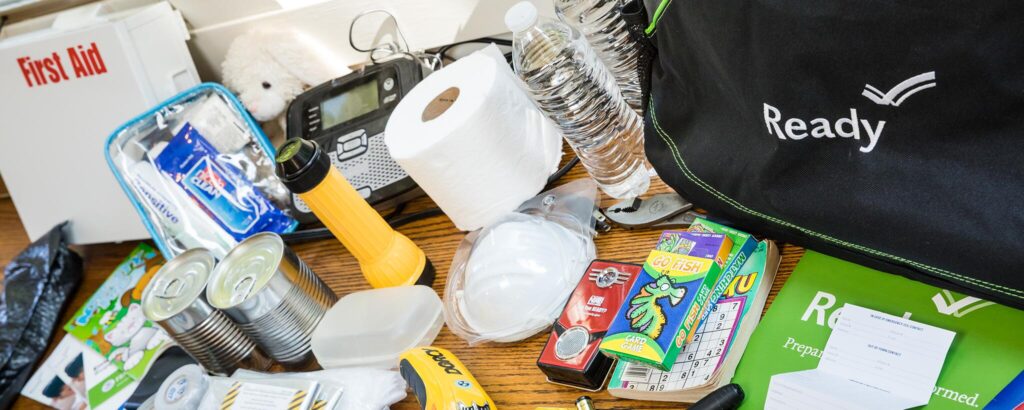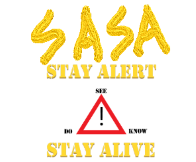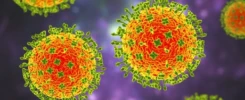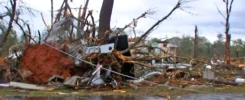For many families, the COVID-19 pandemic has served as a reminder about the importance of having an emergency plan. Communication is one of the most important things during any type of emergency, whether it’s a natural disaster or a pandemic. Having a clear plan is the best way to ensure everyone knows what to do, where to go, and who to call in any unforeseen situation.
Make a Disaster Kit
An emergency kit contains everything your family will need to survive for several days. Ready.gov recommends that your kit contains enough gear, food, and supplies to make it at least 72 hours without needing outside help.
Your disaster kit should contain items such as water, food, a manual can opener, a first aid kit, and other basic items that will keep you safe. It’s also good to have gear such as a weather radio and a headlamp. When choosing head lamps, look for ones that are comfortable to wear while also being bright enough. It’s not a bad idea to store extra batteries in your kit, too.

Having a kit in your home is important, but you might also want to keep an emergency bag in your vehicle. Being stranded in your car can be just as dangerous as being stuck at home without supplies.
Both your home and car kit should contain emergency numbers that you can call for help. Make sure you have a list of emergency services, as well as non-emergency contact numbers for your local police department, city, or township.
Stock Other Essentials at Home
Some emergencies, such as fires, require you to leave the home in order to be safe. Other situations are safer when you ride things out at home. Unfortunately, there’s no telling how long you might need to stay in your house for certain types of emergencies.
While an emergency kit will help you survive for several days after a disaster, you will also want to stock up on essentials for staying safe and comfortable in your home for a longer period of time. For example, it’s a good idea to store a reasonable supply of non-perishable food and household products in your pantry.
It’s also a good idea to have supplies for cleaning and sanitizing. According to the CDC, bleach is a versatile household cleaner that goes a long way when you dilute it to the proper ratios
To clean your hands, though, you’ll likely want to keep a bottle of hand sanitizer in the home. This eliminates the need to waste drinking water to wash your hands, if the need arises. With a bit of aloe vera gel and rubbing alcohol, you can even make your own hand sanitizer when you can’t find any in stores.
Talk About Emergency Situations
Once you’ve made an emergency kit and taken stock of your essential items at home, it’s important to have a family discussion about staying safe in any situation. This can be a stressful conversation for young children, but it’s crucial that everyone in the family knows what to do so you can all stay safe and stay together
During your discussion, you should cover emergencies that can happen to any family, such as a house fire, flood, or severe storms. Some areas are prone to other types of emergencies, too. With that in mind, it’s important to talk about any situations that are unique to your area, such as earthquakes, tornadoes, or tropical storms.
Also, if you run a business out of your home, you need to talk about what to do if you’re targeted by criminals. Armed robbery is a real threat to business owners, and it’s no different if you work from home. Keep all entrances to your home (including separate office entrances) well-lit, and try to avoid any routines involving trips to the bank. Keep an emergency cell phone fully charged in the event that something does occur. Lastly, explain to your family that it’s important to remain calm, call 911, and don’t confront the intruder unless absolutely necessary.
Plan for Storm-Related Repairs
If you live in an area that is susceptible to severe weather, it may not be a bad idea to start vetting repair services in case there’s any damage to your home or property. For instance, if you have large trees on your property and are worried about branches or trees possibly coming down during a high-wind event, start searching online for tree services. Talk to at least three contractors to get estimates on how much tree removal may cost. Also check in with them about what type of equipment they use, and ask for customer referrals.
If you live in a flood prone area, you may have flood insurance to help mitigate the cost of repairs. Remember, however, that this federally-subsidized insurance only pays out for flood damage claims.
One thing to keep in mind when making repairs: always keep your receipts and make note of what you fixed. This can help improve the appraisal value of your home should you decide to sell at some point. If you’ve ever asked yourself, “I’d love to value my house, but I don’t know where to start,” there are online tools that can help you get a ballpark estimate
Obviously, the best time to talk about disasters is before they happen. It can be hard to assemble disaster kits and discuss these difficult topics with your children, but it might just save your lives. Luckily, disasters are relatively rare. But even so, having a plan in place will give you peace of mind.
For more disaster-related information, education, training, and consultation, please visit our Services page, or contact us at survivalmaster@stayalertstayalivellc.com



